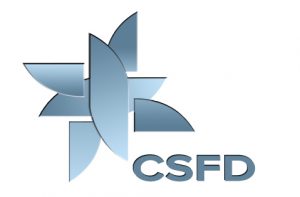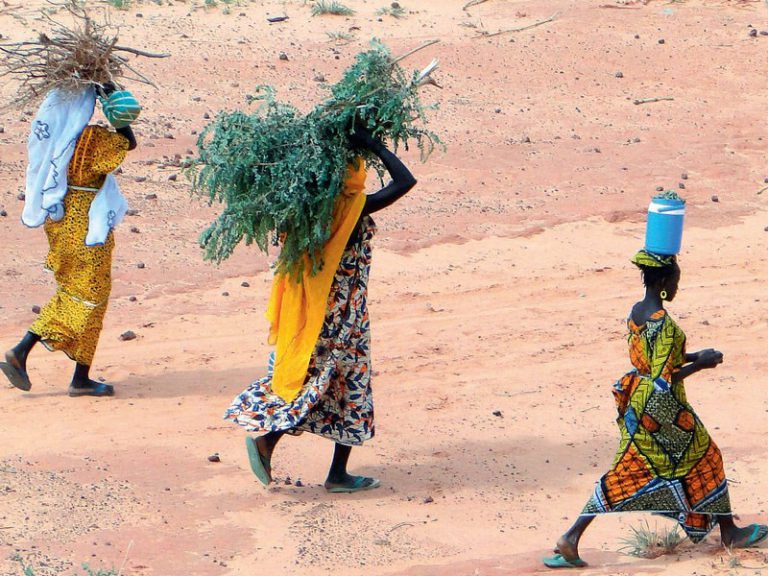Women: actors in the combat against desertification
Differentiated gender roles and activities
The economic and social organization of rural societies has a high level of gender differentiation in terms of rights, activities and responsibilities. This interacts with other aspects of social stratification based on factors such as ethnicity, statutory groups, religion and level of wealth. Consequently, women do not represent a homogeneous category, but a group whose interests are sometimes conflicting and which are equally subject to power relations. Some observations:
- The division of work by gender is universal, but varies from one society to another as well as over time. Women are often assigned to jobs (such as unpaid domestic work) that are accorded less value both socially and economically.
- The organization of work is only marginally based on the strictly physical capacities of men and women. More so it arises from complex interactions between diverse family models, techno-economic transformation, and power relations within a society. For example, a so-called ‘women’s’ activity may begin to interest men as a result of technological change or an increase in market value.
- Quantifying the activities of women in rural areas is difficult due to their relative invisibility in statistics and surveys. These are often restricted to collecting data on the head of the household or farm and include few of the economic activities – market or non-market – that women are involved in. Women often work more hours than men, and they have a larger share of non-commercial activities.
- In relation to men, women have fewer access rights to resources, both tangible (e.g. property, money) and intangible (e.g. consideration, representation in decision-making bodies, educational level).
- Gender also influences access to natural resources – land, water, trees, etc. The disparity between men and women can be partly explained by unequal modes of transmission of the rights to these resources.
The way production and consumption is organized within families is complex. Applying a uniform egalitarian household model based on pooling resources and allocating them according to need is illusory. Individual behaviour can diverge from social norms as a result of socio-economic developments or negotiations between husband and wife/wives that occur ‘off-stage’ from the wider society.
Gender
Is a concept used in social science to refer to the socially constructed relationships between women and men beyond their biological differences. Employing the concept of ‘gender’ rather than ‘sex’ underlines how societies have made use of biological differences, particularly those linked to reproduction, to construct distinct social roles for women and men; roles that are often characterized by inequality. ‘Masculine’ worth is systematically more highly valued than ‘feminine’ worth, even if this worth can vary from one society to another. The domestic sphere dedicated to social reproduction (e.g. cooking and care-related activities for children and/or the elderly) is often the responsibility of women.
Social and environmental change: the transformation of gender relations
For the most vulnerable populations, land degradation and desertification (LDD) have multiple consequences: food insecurity, migration, and deepening inequality between socio-economic groups – as well as, of course, between women and men.
LDD does not affect the activities and living conditions of women and men in the same way, as their respective roles in agricultural production and resource management are different. Indeed, women have a narrower range of possibilities to cope with the impacts of LDD. Underrepresented in the structures of decision-making and power, constrained by social norms that often see them relegated, women’s rights are often the first to be curtailed when the competition for resources intensifies.
In a context of increasing commercialization of land and the weakening of traditional lineage arrangements, women are allocated the most degraded land or even denied property access altogether. A decrease in fallow land and uncultivated areas, where women grow subsistence crops or gather products for food or medicinal purposes, affects the family’s food security, of which women provide a significant share.
Populations impacted by LDD are sometimes compelled to migrate to cities or neighbouring countries, temporarily or even definitively. While in rural areas of the Sudan-Sahel temporary migrations of people have long been part of the activity system, their increase in duration and in extent is exacerbating the vulnerability of women who stay behind in the village to look after the children and elderly. The feminization of migration, both temporary and long term, is also a trend observed in many countries.
Development projects are equally an important factor in the transformation of gender relations. These can contribute to improving women’s empowerment; however, if they fail to take gender issues into consideration, they not infrequently can worsen inequality.
Women taking action in the combat against desertification (CD)
Women are key actors in combatting desertification and in defending their rights despite the constraints, the social norms and the representations of their roles transmitted by local institutions as well as, often, by development projects themselves. In fact, the issues related to gender and the combat against desertification cannot be treated separately, and the objectives of development models should reflect this.
Women’s capacity to combat desertification can take many forms: individual or collective initiatives, carried out at different scales:
- Through retrospective actions in land restoration or anticipatory actions to maintain biodiversity:
- Limiting deforestation by reducing the consumption of firewood through the sustainable management of wood resources (e.g. regulated wood markets, plantations for fuelwood) and by using improved stoves or alternative products for cooking or transforming products.
- Improving the share of women producers/processors in the value chains of agroforestry or harvested products and ensuring the renewal of resources.
- Basing territorial dynamics, particularly the agricultural supply chains for cities, around family farming by training women in agro-ecological methods.
- Supporting land restoration, reforestation and/or agroforestry, as women are often involved in these projects and are able to exploit the resulting products.
- Through collective women’s organizations at different scales: these numerous and diverse organizations can influence the direction of public policy regarding the collective management of resources, the recognition of property rights, and the institutional consideration of gender issues. If they do not deviate from their objectives, these organizations can help to reinforce the decision-making power of women and promote their autonomy. However:
- As soon as these organizations ‘step beyond’ the scope granted to women in the society, a proactive approach is required to permit women to attain responsibility and have their interests represented.
- The creation of all-women groups is often a necessary step to allow women to assert themselves (e.g. gain new skills, professional status, etc.).
- In sub-Saharan Africa, the number of women farmer’s organizations is increasing, but these have less visibility than their mainly male equivalents, largely due to the historical and social conditions in which they arose (through cash crops, for example).
- In mixed-gender organizations, women experience more difficulty than men in attaining leadership positions, especially if their status (ranking order as wife and/or the social situation of the family) is not favourable. The intersection between individual and collective interests can sometimes be problematic and can lead to an increase in disparity between different categories of women.
- Through gender policy and implementation tools such as:
- International conventions, e.g. the UN Convention on the Elimination of All Forms of Discrimination Against Women (1979). The three UN conventions on the environment (climate, biodiversity and desertification) are progressively integrating gender in strategic guidelines.
- National legislation on gender, which has seen significant, though uneven, advances.
- Gender-based strategies and action plans developed by international organizations and national development aid agencies. The UN Sustainable Development Goals now better address the aspect of gender, both across the objectives and through a specific objective (Goal 5: gender equality).
- Tools for measuring, monitoring, informing and better taking into account gender issues (e.g. the OECD gender equality policy marker).
The combat against desertification can contribute to women’s empowerment, by increasing their economic independence, their capacity to act, and the respect of their rights. This can improve their position in society, provided that projects and policy take these aspects into account. To date, the underrepresentation of women in decision-making bodies, from a local to an international level, and insufficient attention to the specific issues that concern women, remain recurrent obstacles.






